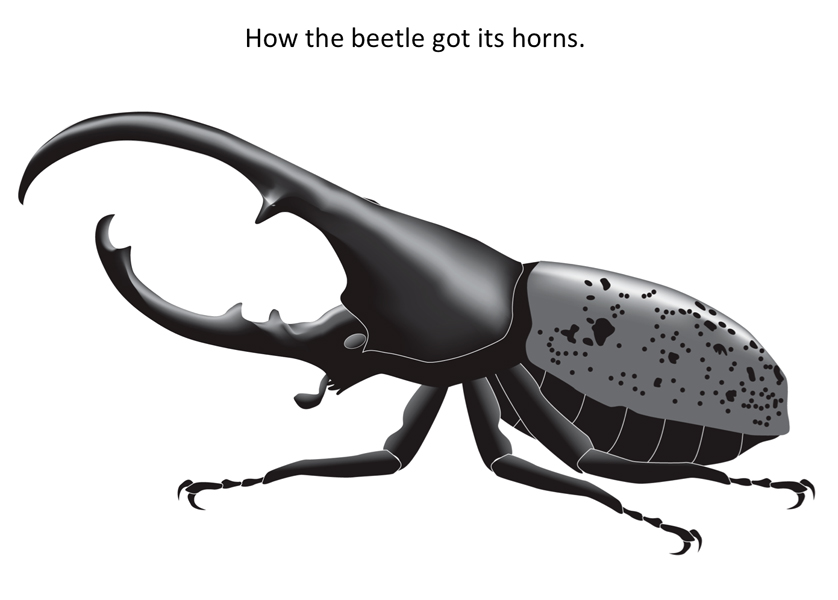| Many beetles have outgrowths that look like rhino horns or deer antlers. As in their mammalian counterparts, these structures can serve as weapons or ornaments or both. The Hercules beetle depicted here wields a powerful pincer. Its two halves develop from the head below and the prothorax above. The eye is above the antenna, which hangs down like a tiny golf club below the mouth in this sketch. Raising the head closes the bottom half of the pincer. In this way rival males can be grasped, wrestled, and flipped during jousting contests. In 2007 the genetics of prothoracic horns was revealed. They apparently evolved when Scr (the Hox gene for the first thoracic segment) accidentally co-opted genes for leg outgrowth, yielding a leg-like appendage at an ectopic site (heterotopy). A similar co-option created 'helmets' in hemipterans (see the treehopper story). Allometric increases in horn length may stem from an enhanced sensitivity of horn-making cells to insulin-like growth factors. Bigger horns come at the expense of smaller eyes, wings, or antennae, depending on their body location, but surprisingly, larger horns do not appear to hinder flying. Horn shapes are sculpted by cell death. Research on beetle horns especially in dung beetles is one of the most fertile subfields of evo-devo. |
|
leopard | cheetah compared with butterfly | anglefish | zebra | mouse cloud leopard | giraffe | ant | beetle | treehopper stalk-eyed fly | ladybird | snake | The Interactive Fly resides on the web server of the Society for Developmental Biology. |


